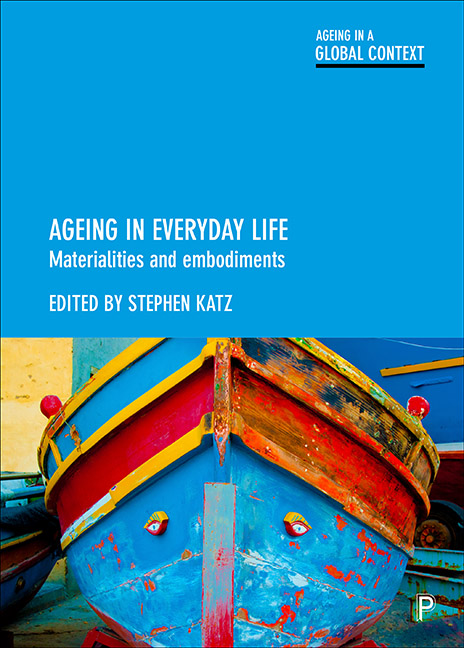Part 2 - introduction
Published online by Cambridge University Press: 22 April 2022
Summary
One of my long-term interests, and one that inspires this part of the book, is the ageing body. In my earlier Foucauldian studies (Katz, 1996), I examined the historical disciplines, texts and rationalities that transformed the aged body into a separable senile form of life, encompassing new scientific truths about ageing. In more recent work, I have reviewed research on ageing and falling, and what I term the ‘phenomenology of gravity’ (Katz, 2015), to suggest that understanding bodily ageing invites a phenomenological and material explanation of the relationships that connect environment, experience and subjectivity. With this research I also became more aware of the academic tendency to neglect older and vulnerable ‘fourth age’ bodies, along with general ageist assumptions in the literature that loss of physical control symbolises a passage into status decline.
My work and that of others (for example, Öberg, 1996; Faircloth, 2003; Gilleard and Higgs, 2013) has grown in reaction to problems of the absent ageing body and embodiment in gerontology and related fields, where the body's role in later life continues to be depicted as a rather passive and homogeneous effect of health, risk and longevity ‘factors’. As Gilleard and Higgs remark about ageing research, ‘While population ageing, ageing as “risk” or “vulnerability” and ageing as status change are important academic preoccupations, it is the ageing of bodies that remains the ineradicable concern of persons, confronting, in their own ageing body, the essential intransience of their lives’ (2013, p 21). At the same time, the ageing body is largely sidelined within the influential sub-field of the sociology of body itself (see, for example, Crossley, 2006; Petersen, 2007; Shilling, 2012), whose proponents’ critiques of consumer society and social regulation rarely include the commercialisation of ‘active ageing’ lifestyles or anti-ageing products, which have grown increasingly ubiquitous. One response to the problem of the absent ageing body has been the work of sociologists and critical gerontologists such as Mike Featherstone and Mike Hepworth (1998), Julia Twigg (2006), Wainwright and Turner (2006) and Emmanuelle Tulle (2008), who look to the embodiment of the life course in everyday cultures such as sport, dance and care.
- Type
- Chapter
- Information
- Ageing in Everyday LifeMaterialities and Embodiments, pp. 125 - 128Publisher: Bristol University PressPrint publication year: 2018



